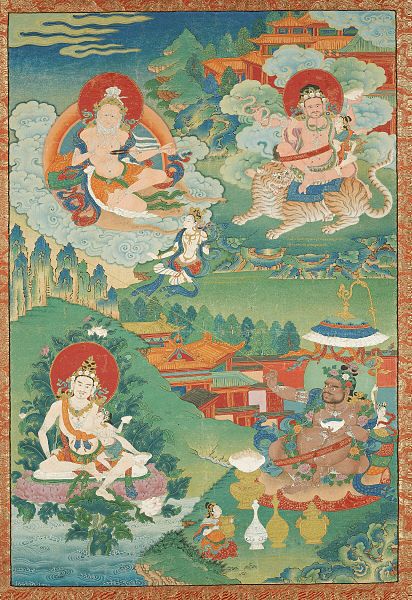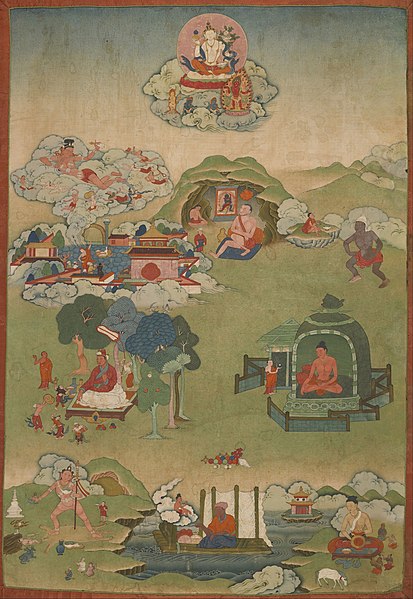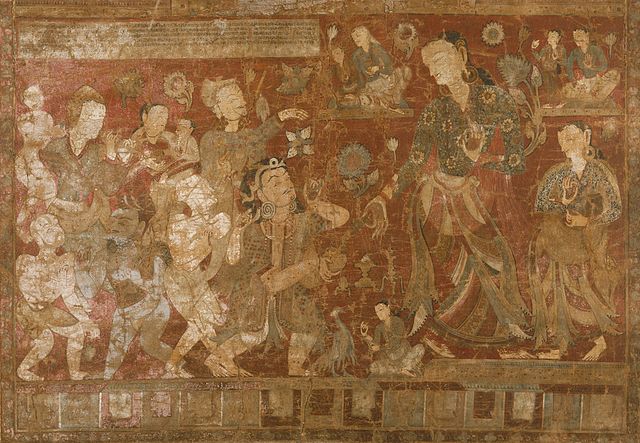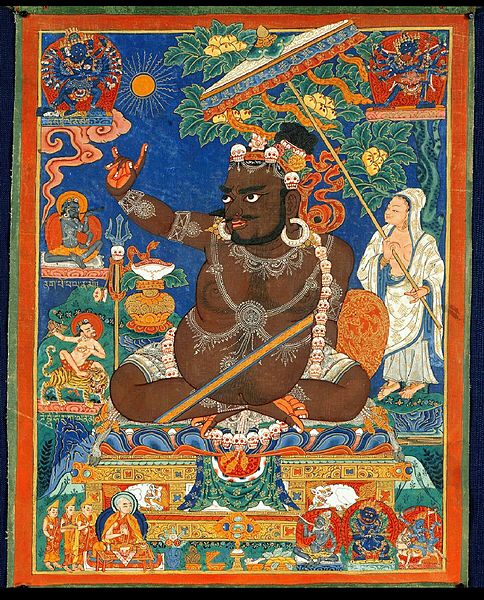Mahasiddha is a term for someone who embodies and cultivates the "siddhi of perfection". A siddha is an individual who, through the practice of sādhanā, attains the realization of siddhis, psychic and spiritual abilities and powers.
Four Mahasiddhas (18th century, Boston MFA). Saraha in top left, Dombhi Heruka top right, Naropa bottom left, and Virupa bottom right.
Eight Mahasiddhas with the bodhisattva Samantabhadra (top); 1st row (l->r): Darikapa, Putalipa, Upanaha; 2nd row: Kokilipa and Anangapa; 3rd row: Lakshmikara; Samudra; Vyalipa.
The Mahasiddha Vanaratna (1384-1468) receiving Abhishekha (Initiation) from Sita Tara (White Tara)
Terracotta sculpture of Luyipa, Nepal, Patan or Thimi, early 17th century
Siddha is a term that is used widely in Indian religions and culture. It means "one who is accomplished." It refers to perfected masters who have achieved a high degree of perfection of the intellect as well as liberation or enlightenment. In Jainism, the term is used to refer to the liberated souls. Siddha may also refer to one who has attained a siddhi, paranormal capabilities.
The mahasiddha Virūpa, 16th century
Although the siddhas (the liberated beings) are formless and without a body, this is how the Jain temples often depict them.






